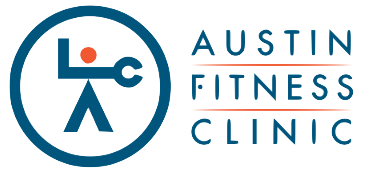Starting to Exercise is Safe; Going Back to Exercise is Dangerous
I remember being much bigger…
Memory is a funny thing. The older we get, the fonder our memories become. What we used to look like, who we dated, even the grades we made all appear brighter with the passage of time. Recollection of our physical abilities works exactly the same way. We all remember exercising more and working harder as young people than we actually did. When we got injured, we remember the recovery being much faster. This misconception gets risky when we try to train the way we “remember” training when we were 25; injury is almost guaranteed.
Our older bodies run an even higher risk if we take a prolonged break from exercise and then try to go back. We recall the routine we “used” to do and try to jump straight back in. Maybe we never actually did that routine, or maybe it took us years of steady training to get to an advanced level of fitness before we stopped. Maybe we actually did train that hard, with youth as our fleeting protection. Either way, applying similar loads to older bodies after de-training is a straight path to injury and pain. The longer we take “off” from steady exercise, the worse the misconception and the greater the risk. Having not exercised for some time, we want to “catch up” and get back to where we were. If we previously exercised 3 times a week before we took 2 years off, then we want to exercise 5-6 times a week now in order to catch back up. We push too hard. We overtrain. We get hurt.
The Quicksand of Injury Patterning
This is where so many clients get bogged down: they stop working out, they get de-conditioned, they go back too hard, and they get injured. They repeat the pattern, and before long people simply equate exercise with injury and discomfort and give up altogether. I hear the refrain constantly form new clients: “Every time I go back to working out, I get hurt”. Exercise isn’t the problem. In fact, exercise is exactly what they need to heal, feel better, and even prevent the next injury. The refrain should be: “Every time I go back to overtraining, I get hurt”. If I can get clients to buy in to this philosophy, I can show them a fun and sustainable way to train for the long run…not just brief bouts of high intensity overtraining between injuries.
Sometimes safe just isn’t sexy…
Really…??!!
VS.
Plyometrics can be safe
Tissue and Load
Have you ever watched kids at play?...running, jumping, falling, and seemingly bouncing right back off the ground. Their tissue is supple, flexible, hydrated, and resilient. Then we get jobs, mortgages, relationships, and everything changes. Until then, young bodies can withstand ridiculously high levels of load and intensity. Bodies over the age of 30 lack this luxury, yet we still apply ridiculous loads to our tissue trying to get our bodies back to what they were. Sure, I want to see myself as 25 and stay young forever, but if I train like a 25 year-old then very soon I will feel 70. The irony is that tissue (even cartilage) responds well to training and load, getting stronger, denser, and more resilient. Exercise (especially play) is the best way to prevent arthritis and avoid fall risk as we age. Very quickly, however, training volume reaches the tipping point where more is NOT better, but rather detrimental to tissue conditioning. For example: there is absolutely nobody over the age of 30 who needs high volume plyometric training (and in fact, even young, high-level athletes don’t). Yes, plyometric exercises are beneficial at any age for neuro-adaptive balance, fall prevention, and velocity-specific strength. Things happen in real life that require our bodies to react to high speed and impact: catching yourself from a fall, jerking your kid back from traffic, etc…but these events never happen at high volume.
Explosive training will make my client stronger and faster, but do I kill her tissue in the process?
How Much is Too Much?
Ah…the eternal question. Trainers and therapists will study this topic and argue long after I’m gone. The answer: it depends. Many factors determine the amount of proper load for each individual’s optimum tissue response. I define “optimum” as the lack of injury/swelling/pain, and not one’s level physical performance or Instagram readiness. The main factors I address for optimum results are sleep, hydration, diet/inflammation, and mental outlook. These factors are key regardless of the client’s age. If a client is systemically inflamed due to poor diet, for example, her tissue is far less tolerant of load. Same holds for a client that hasn’t slept, is going through a divorce, or has worked a 60-hour week (I just described the majority of clients in my studio right now). My job as a trainer is to adjust load and volume accordingly, sometimes session by session. Client outcomes depend more on freedom from injury than any other factor, so I want to train my clients with the bodies they have…not the bodies they remember.






